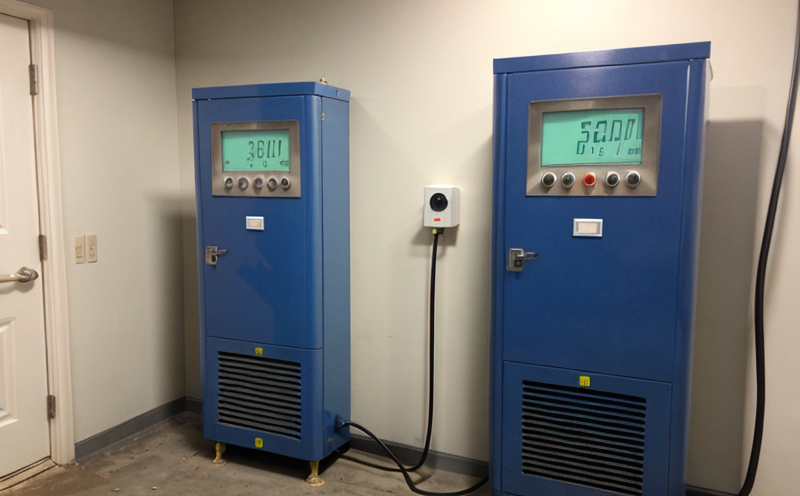ASTM D1945 Hydrocarbon Gas Composition Analysis in Mine Air Testing
The ASTM D1945 standard provides a method for analyzing hydrocarbon gas composition in mine air. This critical testing ensures the safety of mining operations by identifying and quantifying volatile organic compounds (VOCs) such as methane, ethane, propane, and other potentially hazardous gases.
Hydrocarbons are essential to understand not only because they can pose a significant risk to human health but also because their presence may indicate the potential for explosions or other hazards. The standard outlines precise procedures for sample collection, transportation, and analysis using gas chromatography (GC) techniques.
The testing process begins with the careful selection of sampling points within the mine environment. These locations are chosen based on known areas of hydrocarbon emissions or suspected high concentrations. Samples are collected using specialized equipment that ensures minimal contamination during the collection process. The samples are then transported to a laboratory under controlled conditions, preserving their integrity until analysis can commence.
The heart of ASTM D1945 lies in its detailed instructions for conducting gas chromatographic analyses. This involves preparing the sample by injecting it into a GC system where individual components are separated and detected based on their retention times and peak areas. The resulting data is used to determine the exact composition of hydrocarbons present in the mine air.
Accurate reporting is paramount, as it allows mining companies to make informed decisions about ventilation strategies and safety protocols. The report typically includes a detailed breakdown of detected compounds along with their concentrations, which can be cross-referenced against international standards like ISO 13627:2015 for additional validation.
Understanding the implications of hydrocarbon presence is crucial for maintaining safe working conditions in mines. By regularly performing ASTM D1945 tests, mining operations can identify trends and take proactive measures to mitigate risks associated with these gases. This testing also plays a vital role in compliance with regulatory requirements set forth by bodies such as OSHA (Occupational Safety and Health Administration) and MSHA (Mine Safety and Health Administration).
In summary, ASTM D1945 hydrocarbon gas composition analysis is an indispensable tool for ensuring the health and safety of miners. Through meticulous sampling, rigorous analysis, and transparent reporting, this service helps maintain a safe working environment while adhering to stringent regulatory standards.
Why It Matters
The hydrocarbon gas composition in mine air has far-reaching implications for both the safety of miners and the overall efficiency of mining operations. Hydrocarbons, especially methane (CH₄) and ethane (C₂H₆), are flammable gases that can lead to explosions if not properly managed. Accurate monitoring and analysis using ASTM D1945 ensure that these risks are minimized.
By identifying the presence of hydrocarbons, mining companies can implement effective ventilation systems designed to disperse these gases safely. Proper ventilation is critical in maintaining acceptable air quality levels within mines, thereby protecting workers from potential health hazards and increasing productivity.
The results from ASTM D1945 tests also inform decisions regarding the use of equipment that relies on hydrocarbons as fuel sources or lubricants. Monitoring these components helps prevent machinery failures due to contamination or excessive wear caused by high gas concentrations.
From a regulatory perspective, compliance with standards such as ASTM D1945 demonstrates commitment to worker safety and environmental responsibility. This not only enhances the reputation of mining companies but also reduces liability risks associated with non-compliance penalties.
Quality and Reliability Assurance
The quality assurance process for ASTM D1945 testing involves several key steps to ensure accurate and reliable results. First, proper sampling techniques are crucial; this includes selecting appropriate locations within the mine where hydrocarbon levels may vary significantly depending on ventilation patterns and operational activities.
Sample preparation must be handled with care to avoid contamination, which could skew test outcomes. Once prepared, samples undergo rigorous analysis using state-of-the-art gas chromatography equipment calibrated according to manufacturer specifications. Data collected during these analyses are subjected to meticulous quality control checks before final reports are generated.
To further enhance reliability, our laboratory adheres strictly to ISO 17025 accreditation requirements, ensuring that all personnel involved in testing receive ongoing training and certification relevant to their roles. This commitment to excellence extends beyond technical proficiency; it encompasses adherence to ethical practices and continuous improvement initiatives aimed at enhancing overall service quality.
By maintaining high standards throughout every stage of the ASTM D1945 testing process, we provide mining operations with confidence in our results, knowing that they reflect true conditions within their facilities. This trust enables better decision-making regarding safety measures and operational adjustments necessary for optimal performance under challenging environmental circumstances.
Use Cases and Application Examples
- Initial Setup: Conducting ASTM D1945 tests helps establish baseline hydrocarbon levels before commencing new mining projects. This information serves as a reference point against which future readings can be compared, enabling early detection of any changes indicative of potential issues.
- Ongoing Monitoring: Regular sampling and analysis using this standard allow continuous surveillance of mine air quality. Such monitoring is essential for identifying trends over time that might suggest operational inefficiencies or emerging risks requiring immediate attention.
- Emergency Response: In case of suspected leaks or accidental releases, prompt ASTM D1945 testing can quickly assess the situation by pinpointing the types and quantities of hydrocarbons involved. This knowledge guides appropriate response actions to minimize impact on personnel and surrounding areas.
- New Equipment Installation: Before integrating new ventilation systems or machinery into existing mines, it’s prudent to evaluate baseline conditions through ASTM D1945 testing. Post-installation retesting allows verification that the installation has achieved intended objectives without introducing unforeseen complications.





